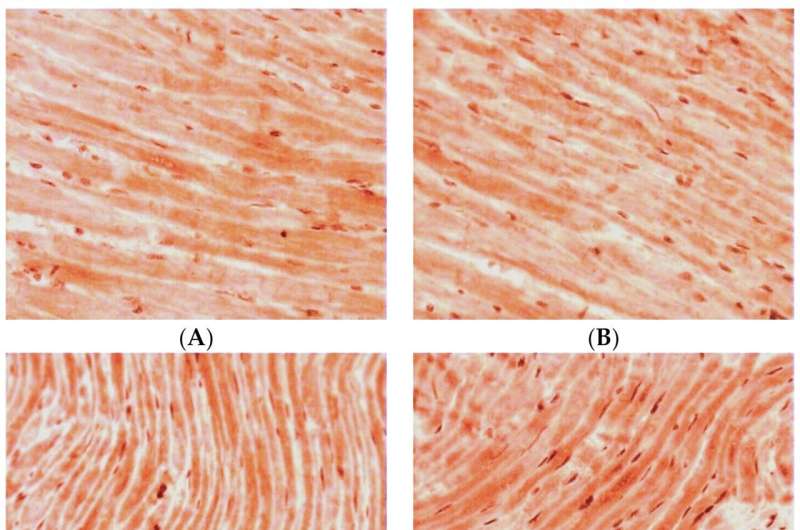This article has been reviewed according to Science X's editorial process and policies. Editors have highlighted the following attributes while ensuring the content's credibility:
fact-checked
proofread
Doctors improve antioxidant response in diabetics and hypertensive patients

RUDN University doctors studied what happens to oxidative and antioxidant processes in the heart during diabetes and hypertension. The work provides insight into the relationship between these processes at the molecular level and outlines possible therapeutic targets. The results were published in Pathophysiology.
Oxidative stress causes damage to cells by reactive oxygen species (ROS). Normally, ROS constantly present in cell metabolism and perform several functions, including the regulation of the myocardium, the muscle tissue of the heart. However, excessive amounts of ROS damage healthy tissues through oxidation and damage all cell components. Thioredoxin-interacting protein (TXNIP) is a key regulator of oxidative stress.
The role of TXNIP was recently discovered and is not yet fully understood. It is known to be involved in glucose metabolism, and protecting the myocardium from ischemia. Another important enzyme involved in maintaining oxidative balance in the body is glutathione synthetase (GS). RUDN University doctors tried to connect these puzzle pieces into a single picture and studied what happens to TXNIP and GS during myocardial damage and impaired glucose metabolism.
"A large amount of data has already been accumulated that describes the participation of TXNIP and GS in the response to pathological factors of various diseases. But despite this, we do not have a clear understanding of their role in the pathogenesis of myocardial damage caused by a combination of hypertension and diabetes mellitus."
"Our goal was to investigate the features of the expression of TXNIP and GS in the myocardium with these pathologies," said Anastasia Sklifasovskaya, Ph.D. in Medicine, assistant at the Department of General Pathology and Pathological Physiology named after V. A. Frolov, RUDN University.
The study was carried out on rats of different ages with insulin-dependent diabetes mellitus (type 1 diabetes), hypertensive crises, and both diseases. Doctors from RUDN University examined the morphological characteristics of the myocardium and immunochemical parameters of the animals' blood.
It turned out that the level of TXNIP increases in rats with hypertensive crises at the age of 57 weeks, in rats of all age groups with diabetes, and in the group with a combination of diseases. The same animals showed almost a two-fold increase in GS. Moreover, in younger rats (aged 38 weeks) with hypertensive crises, the level of TXNIP is significantly reduced.
Doctors associated an increase in TXNIP levels with the activation of oxidative stress, and GS with activation of the antioxidant system. This allowed RUDN doctors to conclude that suppressing the TXNIP expression and increasing the production of glutathione can mitigate myocardial damage and slow down oxidative stress.
"Myocardial impairment due to insulin-dependent diabetes mellitus or hypertension is accompanied by both oxidative stress and antioxidant defense. This allows the use of TXNIP as a marker of oxidative damage to the myocardium. Increased glutathione expression synthetases is a good prognostic sign that even under conditions of severe energy deficiency, the remaining mass of healthy cardiomyocytes continues to protect cells from death."
"Studying other ways to increase the amount of glutathione can improve the condition of the myocardium and slow down the progression of heart failure," said Anastasia Sklifasovskaya, Ph.D. in Medicine, assistant at the Department of General Pathology and Pathological Physiology named after V. A. Frolov, RUDN University.
More information: Anastasia Sklifasovskaya et al, Myocardial Glutathione Synthase and TRXIP Expression Are Significantly Elevated in Hypertension and Diabetes: Influence of Stress on Antioxidant Pathways, Pathophysiology (2023). DOI: 10.3390/pathophysiology30020021




















